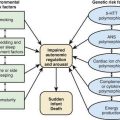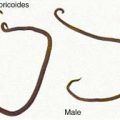Chapter 575 Adrenal Masses
575.2 Adrenal Calcification
In the past, tuberculosis was a common cause both of calcification within the adrenals and of Addison disease. Calcifications may also develop in the adrenal glands of children who recover from the Waterhouse-Friderichsen syndrome; such patients are usually asymptomatic. Infants with Wolman disease, a rare lipid disorder due to deficiency of lysosomal acid lipase, have extensive bilateral calcifications of the adrenal glands (Chapter 80.2).







